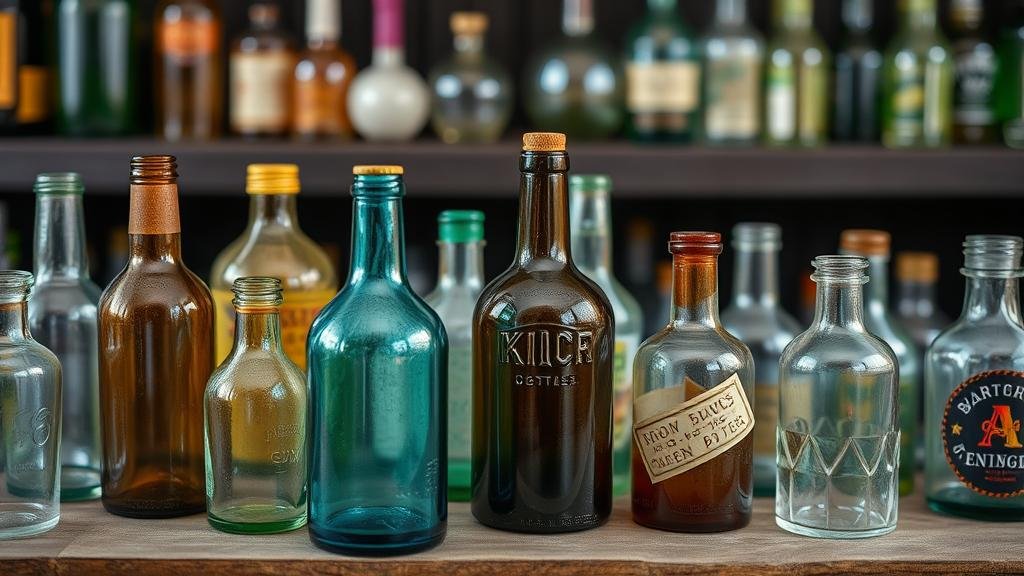Exploring Urban Development Sites for Rare Glassware and Bottles
Exploring Urban Development Sites for Rare Glassware and Bottles
The quest for rare glassware and bottles has captivated collectors and historians alike. As urban landscapes evolve, the excavation of development sites provides not only a glimpse into the past but also an opportunity for discovering valuable artifacts. This article explores the methodologies behind such explorations, the significance of the finds, and practical recommendations for collectors and urban archaeologists engaged in this captivating field.
The Historical Context of Glassware and Bottling
Glass production dates back to ancient civilizations, with notable advancements occurring in regions like Egypt and Mesopotamia. By the 19th century, glass bottles became ubiquitous due to the industrial revolution, coinciding with the rise of the beverage and pharmaceutical industries. So, sites of urban development, often rich in soil layers from various historical periods, can yield a wealth of glassware.
For example, in the late 1990s, excavations in New York City revealed a collection of glass bottles dating back to the Prohibition era, showcasing not only the design and material technology of the time but also social commentary on the alcohol trade. These historical insights make urban development sites invaluable to historians and collectors.
Identifying Potential Urban Development Sites
Finding the right locations for exploration requires a blend of historical knowledge, research skills, and a bit of luck. Potential urban development sites include:
- Abandoned lots that have not been developed for decades
- Historical neighborhoods with documentation of glass production
- Locations near former industrial zones or dumping grounds
A notable case occurred in Baltimore, Maryland, where urban renewal projects unintentionally uncovered a vast array of glass shards and intact bottles in a former glass factory site. Archaeological analysis revealed not just everyday items, but also rare decorative glass pieces that informed researchers about local consumption patterns and industry practices.
Methodologies for Excavation and Preservation
Once a site is identified, careful excavation methodologies are crucial to preserving the integrity of the finds. Standard practices typically include:
- Stratigraphic excavation, ensuring that layers of sediment are documented
- Use of hand tools for careful extraction of glass artifacts
- Labeling and cataloging items for later analysis
For example, a project at the former site of a 19th-century pharmacy in Philadelphia provided a comprehensive outlook on consumer habits through the careful excavation of glass medicine bottles. e bottles, analyzed for materials and inscriptive features, highlighted the transition in medical practices and consumer culture over time.
The Value of Rare Glassware and Bottles
Collectors and historians assign varying degrees of value to glassware, which can depend on factors such as age, rarity, and condition. For example, some of the most coveted pieces include:
- Early American blown glass, known for its unique imperfections and craftsmanship
- Bottles from short-lived brands or distilleries, which are often highly sought after by collectors
A noteworthy instance is the sale of a rare amber-colored whiskey bottle found in a Chicago excavation, which fetched over $20,000 at auction, illustrating the potential economic value of such finds.
Ethical Considerations in Urban Archaeology
While the thrill of discovery is significant, ethical considerations must guide urban archaeological practices. Preservation of cultural heritage is paramount, and this means:
- Obtaining necessary permits and adhering to local laws governing excavation
- Working in collaboration with local historians and Indigenous representatives
Failure to address these considerations can lead to legal repercussions and loss of historical context, which diminishes the overall significance of the findings. A prime example of ethical archaeology is the efforts made during the excavation in Bostons North End, where researchers engaged the community to share their heritage stories, thus enriching the narrative and cultural relevance of discovered items.
Conclusion and Actionable Takeaways
Exploring urban development sites for rare glassware and bottles presents an exciting and deeply enriching opportunity for both collectors and historians. The insights gathered from these explorations not only contribute to a greater understanding of past consumer behaviors but also enhance the cultural fabric of urban environments. To engage effectively:
- Research historical contexts and local practices in your area
- Develop partnerships with local archaeological organizations
- Solicit necessary permissions and approach excavations with ethical responsibility
By following these guidelines, collectors and researchers can help preserve the knowledge and history encapsulated in each glass artifact while contributing valuable insights to the ongoing narrative of urban development.



